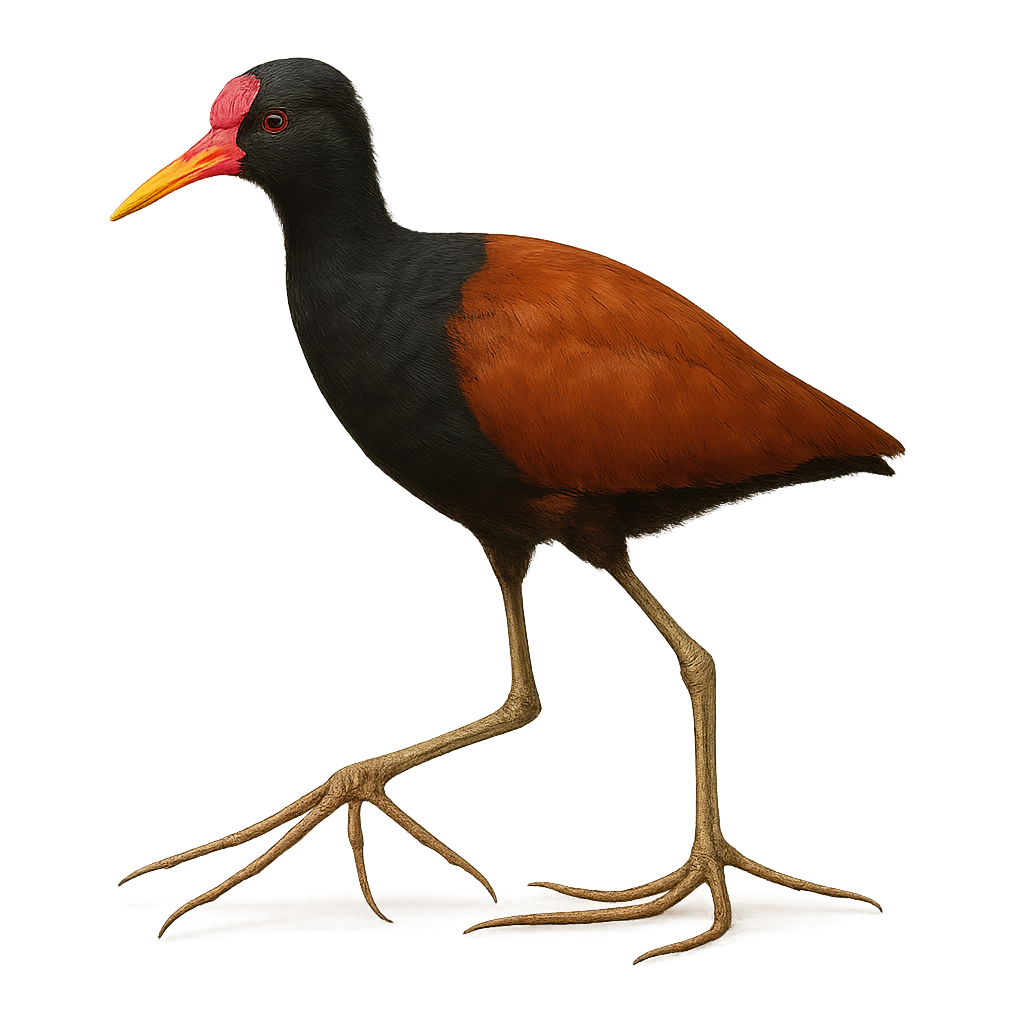Your wildlife photography guide.
Explore the wattled jacana in detail, study its behavior, prepare your shots.
Where to observe and photograph the wattled jacana in the wild
Learn where and when to spot the wattled jacana in the wild, how to identify the species based on distinctive features, and what natural environments it inhabits. The WildlifePhotographer app offers tailored photography tips that reflect the wattled jacana’s behavior, helping you capture better wildlife images. Explore the full species profile for key information including description, habitat, active periods, and approach techniques.
Wattled Jacana
Scientific name: Jacana jacana

IUCN Status: Least Concern
Family: JACANIDAE
Group: Birds
Sensitivity to human approach: Suspicious
Minimum approach distance: 10 m
Courtship display: October to March
Incubation: 22-28 jours
Hatchings: October to April
Habitat:
Marshes, lakes, ponds
Activity period :
Primarily active during the day, with peak activity in the morning and late afternoon.
Identification and description:
The Wattled Jacana, or Jacana jacana, is a striking water bird known for its long legs and elongated toes, allowing it to walk effortlessly on water lilies and other floating plants. Native to the wetlands of South America, this bird features dark brown to black plumage with wings that have greenish sheen and a bright yellow bill topped with a red wattle. Jacanas are known for their polyandrous behavior, where the female mates with multiple males, each responsible for incubating the eggs. They primarily feed on insects and small invertebrates found on the water's surface. Their call is a sharp, piercing cry, often heard at dawn and dusk.
Recommended lens:
400 mm – adjust based on distance, desired framing (portrait or habitat), and approach conditions.
Photography tips:
To photograph the Wattled Jacana, choose the golden hours of morning or evening to benefit from soft light that highlights the sheen of its plumage. Use a telephoto lens of at least 400mm to capture details without disturbing the bird. Be patient and discreet, as this bird can be suspicious. A tripod can be useful for stabilizing your camera and achieving sharp images. Carefully observe the bird's movements to anticipate its actions and capture unique moments.
The WildlifePhotographer App is coming soon!
Be the first to explore the best nature spots, track rutting seasons, log your observations, and observe more wildlife.
Already 1 449 wildlife lovers subscribed worldwide

